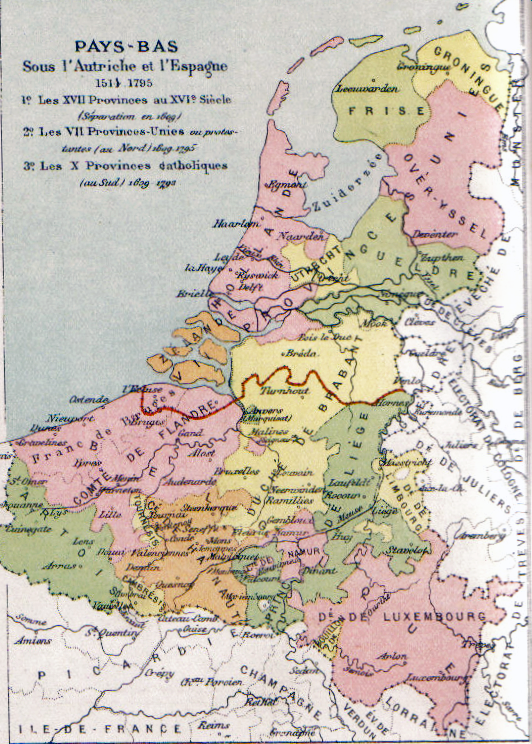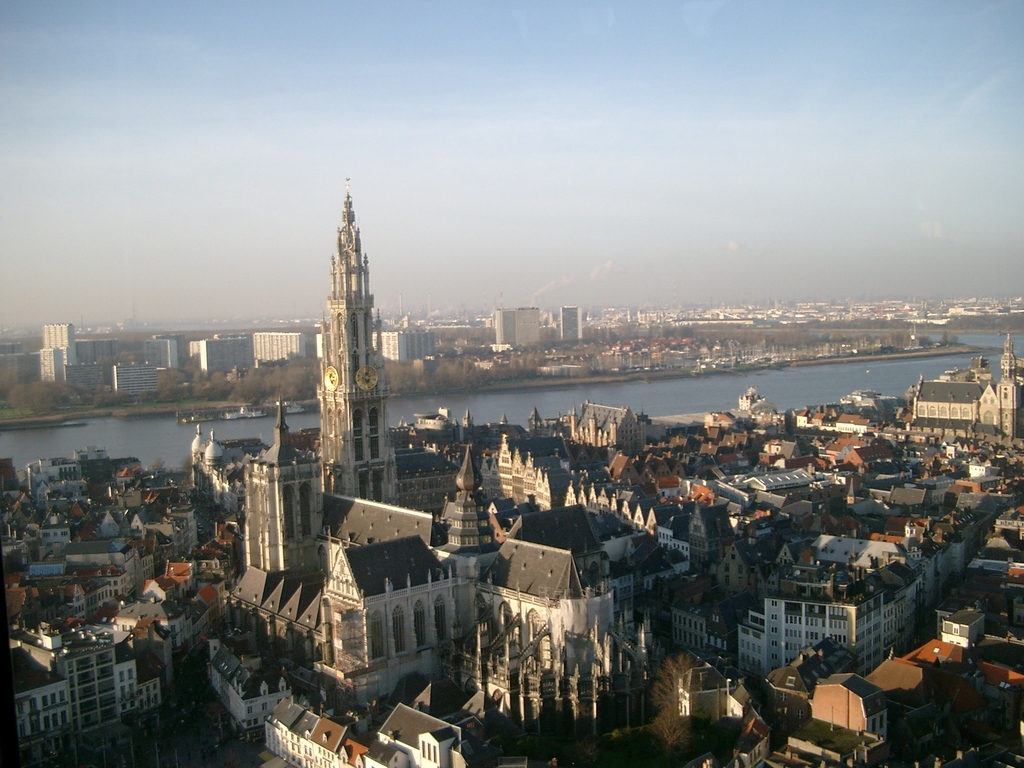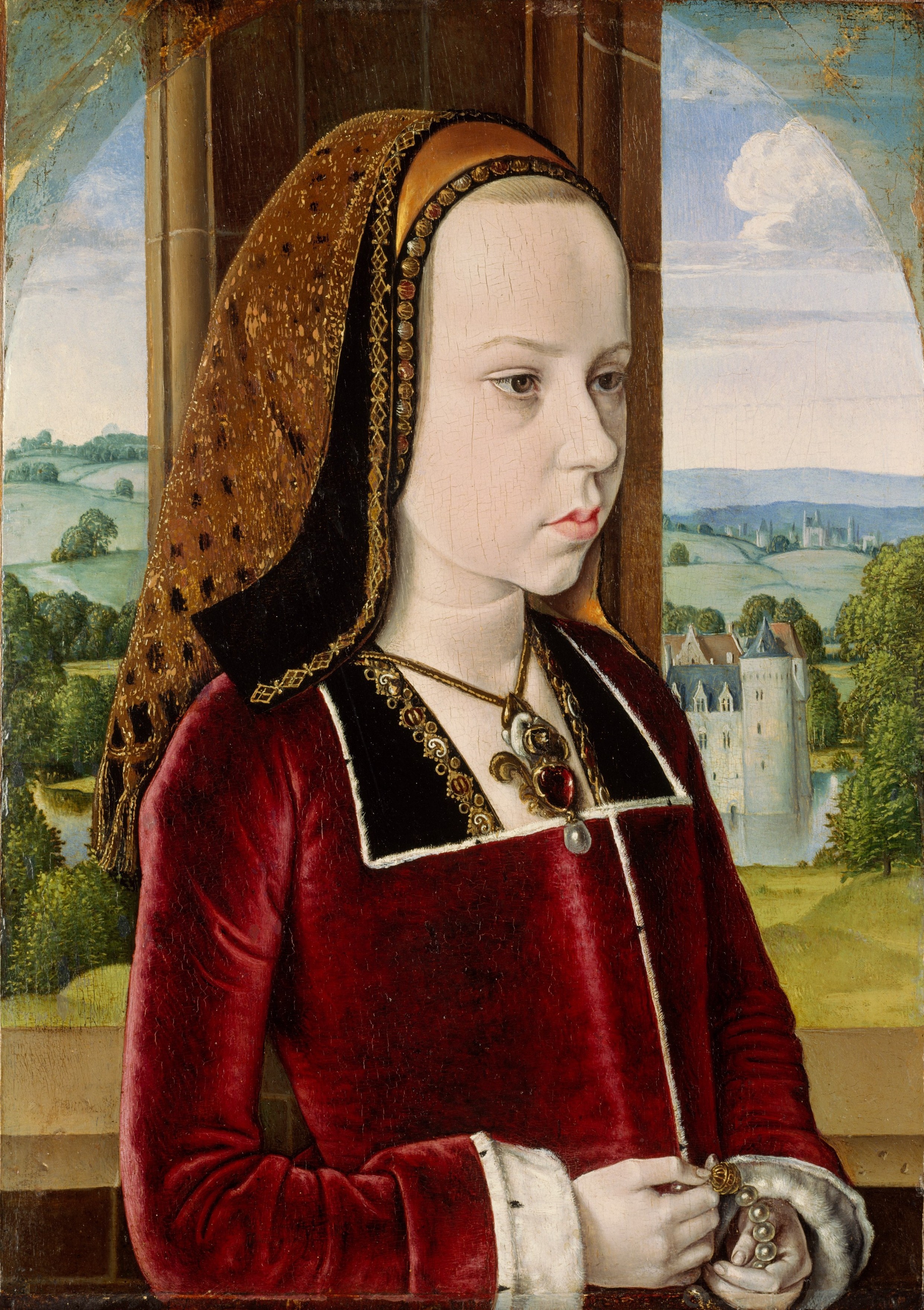|
Lordship Of Mechelen
The Lordship of Mechelen was until 1795 a small authonomous Lordship in the Low Countries, consisting of the city of Mechelen and some surrounding villages. In the early Middle Ages, it was part of the Prince-Bishopric of Liège, which was confirmed in 910. In practice, the area was ruled by the local Berthout family, against the will of the Prince-Bishops of Liège. The Duchy of Brabant tried to annex the Lordship, but as a reaction, Liège gave the area in 1333 to the County of Flanders. The Flemish also didn't gain complete and permanent control. Mechelen was therefore later considered one of the Seventeen Provinces and then as a province of the Southern Netherlands. The Dukes of Burgundy and later the Habsburg Emperors and Kings were personally Lords of Mechelen and for a while turned the city more or less into the capital of the Netherlands. They established here the highest jurisdictional court of the Seventeen Provinces, called the Great Council of Mechelen. Governess M ... [...More Info...] [...Related Items...] OR: [Wikipedia] [Google] [Baidu] |
Middle Ages
In the history of Europe, the Middle Ages or medieval period lasted approximately from the late 5th to the late 15th centuries, similar to the post-classical period of global history. It began with the fall of the Western Roman Empire and transitioned into the Renaissance and the Age of Discovery. The Middle Ages is the middle period of the three traditional divisions of Western history: classical antiquity, the medieval period, and the modern period. The medieval period is itself subdivided into the Early, High, and Late Middle Ages. Population decline, counterurbanisation, the collapse of centralized authority, invasions, and mass migrations of tribes, which had begun in late antiquity, continued into the Early Middle Ages. The large-scale movements of the Migration Period, including various Germanic peoples, formed new kingdoms in what remained of the Western Roman Empire. In the 7th century, North Africa and the Middle East—most recently part of the Eastern Ro ... [...More Info...] [...Related Items...] OR: [Wikipedia] [Google] [Baidu] |
Southern Netherlands
The Southern Netherlands, also called the Catholic Netherlands, were the parts of the Low Countries belonging to the Holy Roman Empire which were at first largely controlled by Habsburg Spain (Spanish Netherlands, 1556–1714) and later by the Austrian Habsburgs (Austrian Netherlands, 1714–1794) until occupied and annexed by Revolutionary France (1794–1815). The region also included a number of smaller states that were never ruled by Spain or Austria: the Prince-Bishopric of Liège, the Imperial Abbey of Stavelot-Malmedy, the County of Bouillon, the County of Horne and the Princely Abbey of Thorn. The Southern Netherlands comprised most of modern-day Belgium and Luxembourg, small parts of the modern Netherlands and Germany (the Upper Guelders region, as well as the Bitburg area in Germany, then part of Luxembourg), in addition to (until 1678) most of the present Nord-Pas-de-Calais region, and Longwy area in northern France. The (southern) Upper Guelders region consisted ... [...More Info...] [...Related Items...] OR: [Wikipedia] [Google] [Baidu] |
History Of Mechelen
Mechelen (; french: Malines ; traditional English name: MechlinMechelen has been known in English as ''Mechlin'', from where the adjective ''Mechlinian'' is derived. This name may still be used, especially in a traditional or historical context. The city's French name ' had also been used in English in the past (in the 19th and 20th century) however this has largely been abandoned. Meanwhile, the Dutch derived ' began to be used in English increasingly from late 20th century onwards, even while ''Mechlin'' remained still in use (for example a ''Mechlinian'' is an inhabitant of this city or someone seen as born-and-raised there; the term is also the name of the city dialect; as an adjective ''Mechlinian'' may refer to the city or to its dialect.) is a city and municipalities of Belgium, municipality in the province of Antwerp (province), Antwerp in the Flemish Region of Belgium. The municipality comprises the city of Mechelen proper, some quarters at its outskirts, the hamlets of ... [...More Info...] [...Related Items...] OR: [Wikipedia] [Google] [Baidu] |
Lordship Of Mechelen
The Lordship of Mechelen was until 1795 a small authonomous Lordship in the Low Countries, consisting of the city of Mechelen and some surrounding villages. In the early Middle Ages, it was part of the Prince-Bishopric of Liège, which was confirmed in 910. In practice, the area was ruled by the local Berthout family, against the will of the Prince-Bishops of Liège. The Duchy of Brabant tried to annex the Lordship, but as a reaction, Liège gave the area in 1333 to the County of Flanders. The Flemish also didn't gain complete and permanent control. Mechelen was therefore later considered one of the Seventeen Provinces and then as a province of the Southern Netherlands. The Dukes of Burgundy and later the Habsburg Emperors and Kings were personally Lords of Mechelen and for a while turned the city more or less into the capital of the Netherlands. They established here the highest jurisdictional court of the Seventeen Provinces, called the Great Council of Mechelen. Governess M ... [...More Info...] [...Related Items...] OR: [Wikipedia] [Google] [Baidu] |
Heist-op-den-Berg
Heist-op-den-Berg () is a municipality located in the Belgian province of Antwerp. The municipality comprises Heist-op-den-Berg proper (including the hamlets: Heist-Goor, Heist-Station, Zonderschot, Heist-Centrum and Bruggeneinde), the villages of (including the hamlet Pijpelheide), , , and . History The 48-meter-high hill on which Heist would later be built (hence the adjunct name ''op-den-Berg'' meaning "on the hill") was formed during the early part of the Ice age. As can be appreciated from the artifacts shown at the regional museum on the city's main square, this area was already populated in prehistoric times. Soon after the Romans yielded this land to the invading Germanic peoples in the 3rd and 4th century, Christianization followed. The village of Itegem, located right on the Nete River, was most likely the first hamlet to be founded, as suggested by a document dating from 976. Chapels in Hallaar and Itegem were built in the 12th century. This century also marked t ... [...More Info...] [...Related Items...] OR: [Wikipedia] [Google] [Baidu] |
Nekkerspoel
Nekkerspoel is a neighbourhood of Mechelen, Belgium, immediately east of the city. The name means pool of one or more '' Nekkers'' or water demons. and it is presumed that in earlier centuries locals taking a shortcut through the marshlands, of which the Mechels Broek is a surviving remnant, may have strayed off safer pathways and lost their lives. In 1904, remnants dating from the La Tène era of a settlement of several wooden houses and an 8.4 metre long oaken dugout canoe were found at a depth of 5 metres. This hamlet was already well-populated and built-up at a time that otherwise mainly a few monasteries were seen outside the city's former walls. Meanwhile, it obtained Mechelen's secondary station on Belgium's major Brussels-Mechelen-Antwerp railway, and the Toy Museum A toy museum is a museum for toys. They typically showcase toys from a particular culture or period with their history. These are distinct from children's museums, which are museums for children, and are of ... [...More Info...] [...Related Items...] OR: [Wikipedia] [Google] [Baidu] |
Province Of Antwerp
) , native_name_lang = nl , settlement_type = Province of Belgium , image_flag = Flag of Antwerp.svg , flag_size = , image_shield = Wapen van de provincie Antwerpen.svg , shield_size = 120px , image_map = Provincie Antwerpen in Belgium.svg , coordinates = , subdivision_type = Country , subdivision_name = , subdivision_type1 = Region , subdivision_name1 = , seat_type = Capital , seat = Antwerp , leader_title = Governor , leader_name = Cathy Berx (CD&V) , area_total_km2 = 2,876 , area_footnotes = , population_total = 1,857,986 , population_footnotes = , population_as_of = 1 January 2019 , population_density_km2 = auto , blank_name_sec2 = HDI (2019) , blank_info_sec2 = 0.945 · 4th of 11 , website = Antwerp Provin ... [...More Info...] [...Related Items...] OR: [Wikipedia] [Google] [Baidu] |
Deux-Nèthes
Deux-Nèthes (, nl, Twee Neten) was a department of the First French Republic and of the First French Empire in present-day Belgium and the Netherlands. It was named after two branches of the river Nete (Grote Nete and Kleine Nete). The southern part of its territory corresponds more or less with the present-day Belgian province of Antwerp. It was created on 1 October 1795, when the Austrian Netherlands were officially annexed by the French Republic. Its territory was the northern part of the former duchy of Brabant. After the annexation of the Kingdom of Holland in 1810, the department was expanded with the western half of the present-day Dutch province of North Brabant, itself historically part of the Duchy of Brabant. The Chef-lieu of the department was Antwerp (''Anvers'' in French). The department was subdivided into the following four arrondissements and cantons (with French names): * Anvers): Anvers (4 cantons), Brecht, Ekeren, Kontich, Wilrijk and Zandhoven. * Bréda: ... [...More Info...] [...Related Items...] OR: [Wikipedia] [Google] [Baidu] |
Brussels
Brussels (french: Bruxelles or ; nl, Brussel ), officially the Brussels-Capital Region (All text and all but one graphic show the English name as Brussels-Capital Region.) (french: link=no, Région de Bruxelles-Capitale; nl, link=no, Brussels Hoofdstedelijk Gewest), is a region of Belgium comprising 19 municipalities, including the City of Brussels, which is the capital of Belgium. The Brussels-Capital Region is located in the central portion of the country and is a part of both the French Community of Belgium and the Flemish Community, but is separate from the Flemish Region (within which it forms an enclave) and the Walloon Region. Brussels is the most densely populated region in Belgium, and although it has the highest GDP per capita, it has the lowest available income per household. The Brussels Region covers , a relatively small area compared to the two other regions, and has a population of over 1.2 million. The five times larger metropolitan area of Brusse ... [...More Info...] [...Related Items...] OR: [Wikipedia] [Google] [Baidu] |
Margaret Of Austria, Duchess Of Savoy
Archduchess Margaret of Austria (german: Margarete; french: Marguerite; nl, Margaretha; es, Margarita; 10 January 1480 – 1 December 1530) was Governor of the Habsburg Netherlands from 1507 to 1515 and again from 1519 to 1530. She was the first of many female regents in the Netherlands. Childhood and life in France Margaret was born on 10 January 1480 and named after her stepgrandmother, Margaret of York. She was the second child and only daughter of Maximilian of Austria (future Holy Roman Emperor) and Mary of Burgundy, co-sovereigns of the Low Countries. In 1482, her mother died and her three-year-old brother Philip the Handsome succeeded her as sovereign of the Low Countries, with her father as his regent. The same year her mother died, King Louis XI of France signed the Treaty of Arras, whereby her father promised to give her hand in marriage to Louis' son, Dauphin Charles. The engagement took place in 1483. With Franche-Comté and Artois as her dowry, Margaret was ... [...More Info...] [...Related Items...] OR: [Wikipedia] [Google] [Baidu] |
Great Council Of Mechelen
From the 15th century onwards, the Great Council of the Netherlands at Mechelen (Dutch: ''De Grote Raad der Nederlanden te Mechelen''; French: ''le grand conseil des Pays-Bas à Malines''; German: ''der Grosse Rat der Niederlände zu Mecheln'') was the highest court in the Burgundian Netherlands. It was responsible for the Dutch-, French- and German-speaking areas. In Luxembourgish the phrase ''"mir ginn op Mechelen"'' (we'll go to Mechelen) still means playing one's last trump card. The Grote Raad first sat in the Schepenhuis in Mechelen then, from 1616, in the (old) palace of Margaretha of Austria on Keizerstraat. Origins and history The medieval rulers were assisted by advisers. Together with the ruler they formed the Council of State, also called the ''consilium'' or ''curia''. Gradually the council became more specialised, with separate financial, judicial and political council emerging. In the Burgundian Netherlands, the councils initially travelled with the Duke. In 147 ... [...More Info...] [...Related Items...] OR: [Wikipedia] [Google] [Baidu] |
County Of Flanders
The County of Flanders was a historic territory in the Low Countries. From 862 onwards, the counts of Flanders were among the original twelve peers of the Kingdom of France. For centuries, their estates around the cities of Ghent, Bruges and Ypres formed one of the most affluent regions in Europe. Up to 1477, the area under French suzerainty was west of the Scheldt and was called "Royal Flanders" (Dutch: ''Kroon-Vlaanderen'', French: ''Flandre royale''). Aside from this, the counts, from the 11th century onward, held land east of the river as a fief of the Holy Roman Empire: "Imperial Flanders" (''Rijks-Vlaanderen'' or ''Flandre impériale''). Part of the Burgundian Netherlands from 1384, which had a complex relation with France, the whole county fell to the Empire after the Peace of Madrid in 1526 and the Peace of the Ladies in 1529. Having already regained much, by 1795, the rest – within the Austrian Netherlands – was acquired likewise by France under the Frenc ... [...More Info...] [...Related Items...] OR: [Wikipedia] [Google] [Baidu] |





.png)